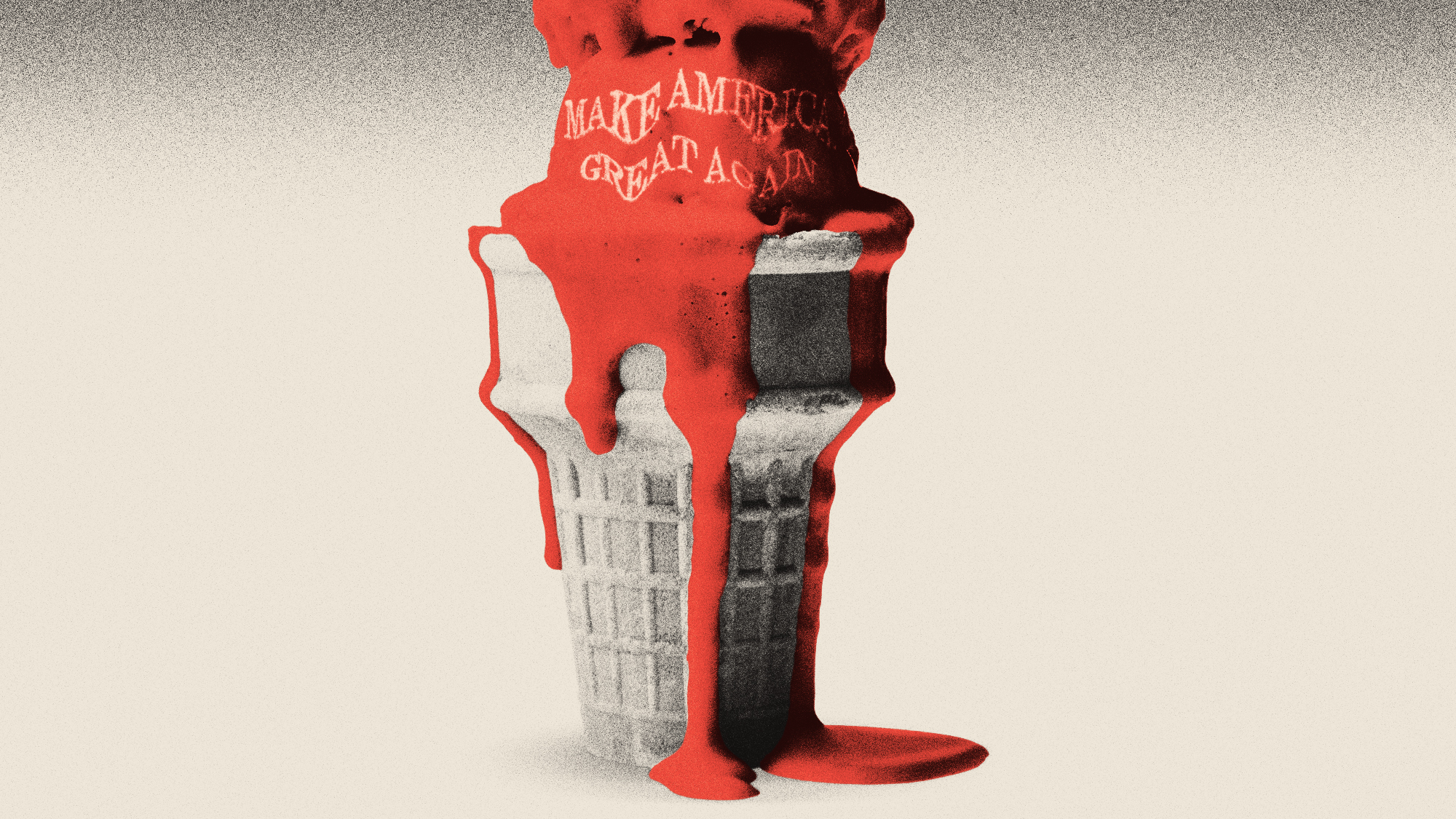Blinky Palermo: Retrospective 1964–1977
The German-born artist's paintings of circles, squares, triangles, and more-irregular shapes pushed painting very close to its theoretical limits.
Hirshhorn Museum, Washington, D.C.
Through May 15
Blinky Palermo’s short career was “a ceaseless experiment,” said Lavanya Ramanathan in The Washington Post. Remembered in Europe as a major player in postwar art, he died at 33, in 1977, though not before pushing painting very close to its theoretical limits. This “expertly” curated show, which is nearing the end of a yearlong American tour, lets us watch how the subversive bent of this German-born artist played out. The early works are fairly conventional abstract paintings that recall Piet Mondrian. But soon enough, the artist’s iconoclasm takes off in earnest. Turn a corner and you’re confronted by a world in which the monochromatic geometric forms of the early canvases have been “unchained”: His paintings have become a collection of circles, squares, and triangles, as well as more-irregular shapes. “From afar, the objects, as they’re known, look like sculpture.” But get close to a work like Butterfly II (1969)—a pairing of a painted stick with a small wing-like canvas—and you’ll notice a handmade quality that keeps it “firmly in the realm of painting.”
The Week
Escape your echo chamber. Get the facts behind the news, plus analysis from multiple perspectives.

Sign up for The Week's Free Newsletters
From our morning news briefing to a weekly Good News Newsletter, get the best of The Week delivered directly to your inbox.
From our morning news briefing to a weekly Good News Newsletter, get the best of The Week delivered directly to your inbox.
But Palermo hadn’t shown the last of his “endgame moves,” said Blake Gopnik in TheDailyBeast.com. His most radical assault on painting came in the form of his so-called Fabric Pictures, which are “nothing more than a few stripes of color set side by side, or even one color stretching edge to edge.” At first glance, these pared-down paintings look like garden-variety minimalism—think Barnett Newman, simplified even further. “The thing is, they aren’t painted.” Instead, they’re made completely from pre-dyed department-store fabric. “They help deflate the holier-than-thou pretensions of some earlier abstraction, as well as old clichés about the skilled hand of the painter and the fine eye of the colorist.” Yet herein lies the brilliance: Despite the theoretical monkeying around, “they also function as truly excellent abstractions.”
A free daily email with the biggest news stories of the day – and the best features from TheWeek.com
-
 Metaverse: Zuckerberg quits his virtual obsession
Metaverse: Zuckerberg quits his virtual obsessionFeature The tech mogul’s vision for virtual worlds inhabited by millions of users was clearly a flop
-
 Frank Gehry: the architect who made buildings flow like water
Frank Gehry: the architect who made buildings flow like waterFeature The revered building master died at the age of 96
-
 Is MAGA melting down?
Is MAGA melting down?Today's Big Question Candace Owens, Tucker Carlson, Laura Loomer and more are feuding